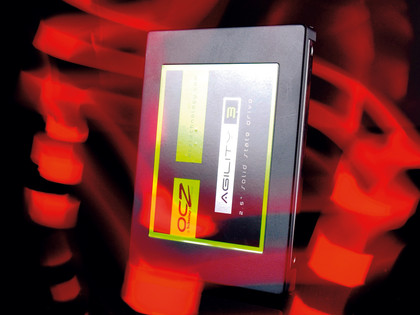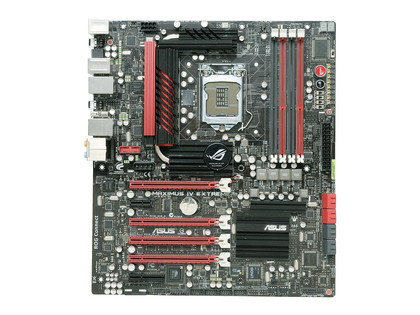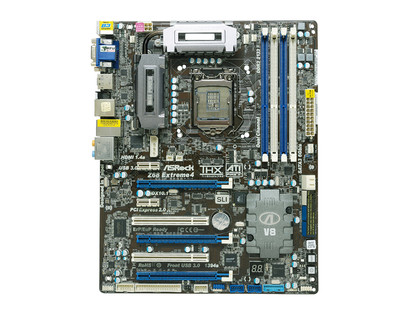Motherboard upgrade: the complete guide
Complete lowdown on the latest AMD and Intel boards
Come in number 7

Other aspects of interest involving X79 and Sandy Bridge-E include PCI Express going on-die and upgrading to 3.0. What you don't get, however, is native USB 3.0 support in the chipset or integrated graphics.
The latter might not seem a great loss regarding a high-end CPU likely to be paired with a monster GPU on a discrete graphics card.
But it means you miss out on Intel's funky Quick Sync hardware video encode acceleration. Forking out well over £500 for a Sandy Bridge CPU only to find it lacks a trick feature found on older chips available for £100 doesn't sound too clever to us.
But then Intel's high end platforms of recent years have rarely withstood rational analysis. They're all about willy waving. And that means it's the lesser 7 Series chipsets and the CPUs that go with them that will really be interesting. The great news is that Intel is sticking with the LGA 1155 socket for mainstream 7 Series chipsets and in turn the new 22nm Ivy Bridge processors.
Belatedly, Intel will also bring native USB 3.0 support to mainstream 7 Series chipsets. Of all the new chipsets in the 7 Series, it's the Z77 and Z75 that look most interesting. The Z77 is effectively the replacement for the current Z68 while the Z75 offers a similar but slightly lower cost solution that only lacks Intel's Smart Response Technology SSD caching and three-way multi graphics support. No biggie, then.

That said, all of the new 7 Series LGA 1155 consumer chipsets support both integrated graphics and overclocking, so it looks like there won't be any really duff options. Likewise, you get native USB 3.0 support across the whole family of LGA 1155 7 Series. Intel, itseems, has finally learned some lessons from the debacle that was the P67 chipset.
The final major upgrade comes in the form of PCI Express 3.0. In the past, when PCI-e lanes were provided by the motherboard chipset, you had the option of going for a high-end board if you fancied hooking up several graphics cards. But now that mainstream Intel CPUs have integrated PCI Express controllers, that's not an option.
Sign up for breaking news, reviews, opinion, top tech deals, and more.
So,the boost from 500MB/s per lane to 1GB/s per lane that comes with PCI-e 3.0 is very welcome and ensures there's plenty of bandwidth for running multiple, next-generation graphics chips in parallel. Remember, of course, that the CPU must include a compatible PCI Express controller to get the full 3.0 experience.
Six is still sexy
Ironically, one of the more interesting aspects of the new 7 Series is what its carry-over LGA1155 socket means for older chipsets. The new Ivy Bridge processors will actually be compatible with some existing 6 Series motherboards. Shock, awe and horror, we know. But true. For once you won't actually have to buy a new motherboard to run the latest Intel processor.

Due out around March next year, Ivy Bridge is a 'Tick' in Intel speak, meaning it's a die shrink to 22nm rather than a brand new architecture. However, thanks to Intel's new triple-gated transistors, the new 22nm node is said to deliver a near two-node performance leap. Other hot new features include Quick Sync 2.0 and a revised graphics core likely to offer 16 rather than 12 execution units. On-die PCI Express 3.0 is also part of the mix but is one of the features that will not be available when hooking Ivy Bridge CPUs up to 6 Series chipsets.
All of which pretty much brings us up to date with the state of play in the world of motherboards today. There's lots of great new technology already available or coming soon. But here's the best bit.
Despite the flux, CPUs are experiencing, and this applies to what both Intel and AMD are delivering, a modicum of stability on the motherboard front. Later this year and early next, a slew of new processors with funky features are due. But at least some existing chipsets and motherboards are already compatible.
That's important because it means you can build a new system today confident that there's a simple drop-in CPU upgrade path available 12 months down the road. At least it does if you chose the right motherboard.
- 1
- 2
Current page: Buying a motherboard: 6 and 7 Series chipsets
Prev Page Buying a motherboard: Fusion and BulldozerTechnology and cars. Increasingly the twain shall meet. Which is handy, because Jeremy (Twitter) is addicted to both. Long-time tech journalist, former editor of iCar magazine and incumbent car guru for T3 magazine, Jeremy reckons in-car technology is about to go thermonuclear. No, not exploding cars. That would be silly. And dangerous. But rather an explosive period of unprecedented innovation. Enjoy the ride.